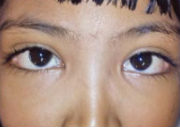Hypothermia:
Hypothermia is defined as body temp below 95 F or 35 C + altered mental status and neurodeficit (i.e. Ataxia)
Hypothermic heart is prone to arrythmias, incl V fib
Importently ::: most acurate way to determine a patients temp is via Esophageal thermometer (better than rectal or bladder) !!!
Cold Stress:
Something hypothermia do to the system:: We can say it as Cold stress
Cold stress>> Slowing of Physiologic functions (metabolism, enzymatic reactions)>> it will result in 2 things
1.. Decreased automaticity
2. Decreased Conduction ability of cardiac tissue
1 & 2 >> will lead to conduction delay
As a result of this mechanism> Related ECG findings will be found as in the above case i.e: PR prolongation, QRS widening, Bradyarrythmias, J (OsBorn) wave, irregular baseline (shivering induced)
Difference between STE and J wave is given in this picture
Next Question comes in mind, what are the major Culprits in Hypothermia
There are few::
1. Heat Loss (accidental cold exposure may be ;)
2. Vasodilation: - Drugs, -Alcohol, - Sepsis
3. Impaired Heat Production: -Endocrine disorder, - malnutrition, - Hypoglycemia
4. Iatrogenic: -Massive Transfusion, - Dialysis, -Intentional Hypothermia protocol goes wrong
5. Impaired Thermoreglation:: -SPinal cord injury, - CVA, Hypothalamic injury
Now i am going to explain some pathophysiology and hemodynamics in Hypothermia
Initially there will be increase in SVR via vasoconstriction to prevent heat loss and maintain core temperature.
This will result in increased central blood volume>> causing an inhibition of ADH release>> resulting into large quantities od dilute urine (cold induced Diuresis)>> resulting into HYPOTENSION
This cold results into these changes above, so while treating these patients we should be careful as our patient may need/ has>> Labile Vital Signs (possible pressor needs), Fluid requirements accordingly
Credits: IMCore
I hope we learnt today something. More facts to come soon








